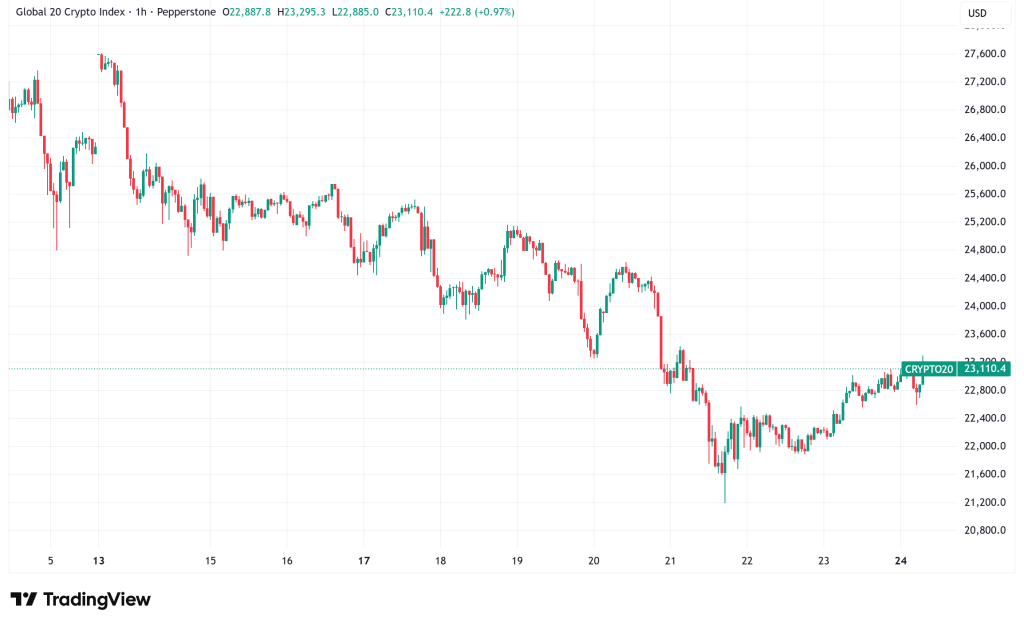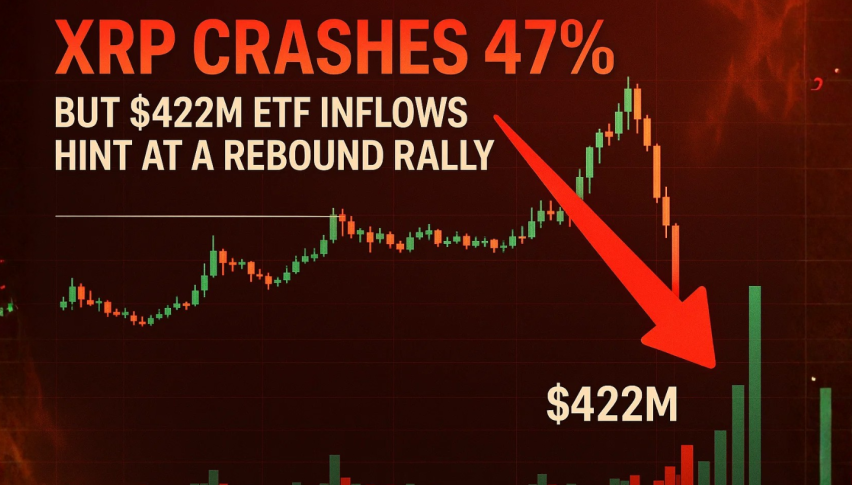Daily Crypto Signals: Bitcoin and Ethereum Face Market Turbulence, ETF Flows Reverse and Whale Accumulation Stalls
Bitcoin and Ethereum are experiencing significant downward pressure as the key drivers that propelled their recent rallies have reversed

Quick overview
- Bitcoin and Ethereum are facing downward pressure due to reversed demand drivers, with Bitcoin trading around $87,400 and Ethereum struggling below $3,000.
- Key factors contributing to the market correction include ETF outflows, declining digital asset treasury demand, and reduced whale accumulation.
- Despite short-term challenges, Bitcoin's long-term fundamentals remain intact, with its dominance rising above 58% as investors seek stability.
- Ethereum's recovery to $3,000 hinges on attracting new investors, as current long-term holders may not be enough to drive prices higher.
Bitcoin BTC/USD and Ethereum ETH/USD are experiencing significant downward pressure as the key drivers that propelled their recent rallies have reversed, with Bitcoin trading around $87,400 after dropping from its all-time high and Ethereum struggling below $3,000 amid weakening new investor interest. Market analysts point to ETF outflows, declining digital asset treasury demand, and reduced whale accumulation as primary factors behind the correction, though long-term fundamentals remain intact.

Crypto Market Developments
The cryptocurrency market is going through a tough time right now because demand engines that used to sustain it are now going through big changes. The Bitcoin community is even more angry with JP Morgan now that MSCI may leave crypto treasury businesses out of its indices in January 2026. There are demands for boycotts. If this happens, it could cause crypto treasury businesses to sell off their assets, which would hurt prices.
There has also been more talk about privacy currencies. Eric Balchunas, a senior ETF analyst at Bloomberg, says that Zcash might weaken political and cultural support for Bitcoin. Also, BlackRock’s head of digital assets said that most institutional clients aren’t taking into account Bitcoin’s potential for worldwide payments when making investment decisions. Instead, they are mostly focusing on the digital gold story.
Market structure indicators imply that Bitcoin’s volatility is rising again, with implied volatility creeping back around 60 after staying low after ETF approvals. This might mean a return to price movement driven by options, which could cause big changes in both directions. Even though things have been rough, Bitcoin’s dominance has risen back beyond 58% as investors put their money into the most stable cryptocurrency throughout the downturn.
Bitcoin Reclaims $87,000
Bitcoin is currently trading at about $87,400, which is a big drop from its previous high but still a big gain from earlier in the year. The change in main demand drivers has been especially clear, with exchange-traded fund flows going from steady inflows to large withdrawals. NYDIG’s analysis shows that spot Bitcoin ETFs have become a problem after being the best-performing investment in this cycle.
Digital asset treasury businesses are also feeling the heat, as the premiums on shares that trade relative to net asset value are going down across the board. For the first time in months, the supply of stablecoins has gone down, which means that liquidity is leaving the ecosystem. These are clear signals that the reflexive cycle that is pushing prices up is losing steam. However, no digital asset treasury has showed signs of financial trouble yet.
Even while there are problems in the short term, many say that Bitcoin’s long-term path is still clear. The asset is still gaining traction with institutions, sovereign interest is growing, and its position as a neutral programmable monetary asset is still very much in play. But the way forward is likely to be emotionally difficult and full of rapid changes as the cycle tale driven by flows, leverage, and reflexive behavior becomes stronger.
Greg Cipolaro from NYDIG said that in the past, when the reflexive loop breaks, the market follows a set pattern: liquidity gets tighter, leverage has a hard time gaining traction, and stories that used to underpin the market cease turning into actual flows. Investors should hope for the best but get ready for the worst, since prior cycles show that growth will be uneven.
When Will Ethereum Cross $3,000 Again?
Ethereum is trading at about $2,814, which is slightly below the $3,000 mark that people think is important, and it has its own problems to deal with. As outflows halt, the HODLer Net Position Change indicator demonstrates that long-term holders are becoming more confident. The metric has moved out of the negative range. This change means that current holders are putting less pressure on selling and may soon switch from holding to buying.
But larger momentum indicators show a worrying lack of strength. The number of new Ethereum addresses is not changing, which means that potential new investors are not showing any interest. This lack of new demand is especially worrisome because new money coming in is necessary for prices to keep going up. If there aren’t enough new people entering the market, the support from long-term holders may not be enough to push ETH beyond $3,000.
Ethereum is only 6.6% away from getting back to $3,000, but fresh investors will need to get back in to help it get there. If demand picks up and new money comes back into the market, Ethereum might rise above $3,000 and maybe even turn that level into support, opening the door for objectives at $3,131 or higher. If this zone is successfully reclaimed, the current bearish perspective will be invalidated and bullish momentum will return.
- Check out our free forex signals
- Follow the top economic events on FX Leaders economic calendar
- Trade better, discover more Forex Trading Strategies
- Open a FREE Trading Account


